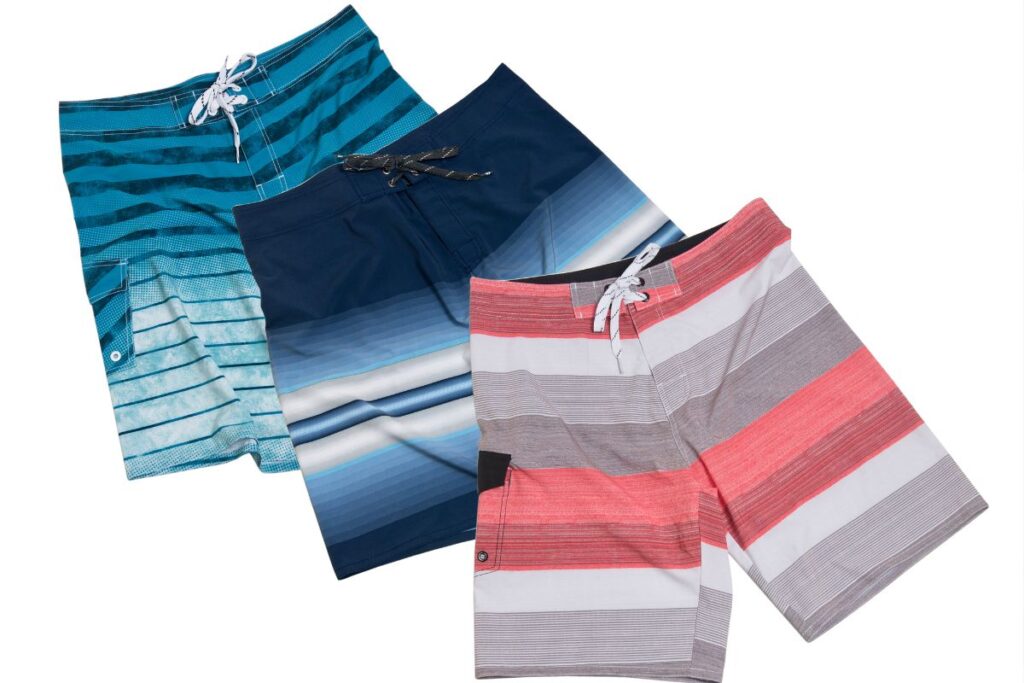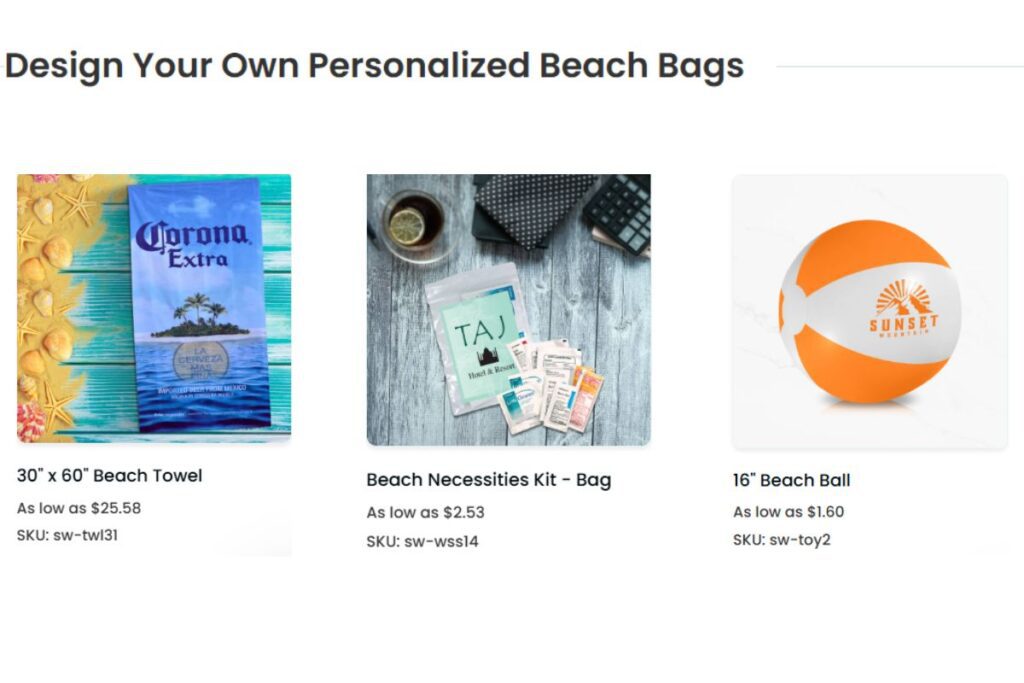Starting a swimwear line can be an exciting journey in the fashion industry. Many people dream of creating unique designs that allow others to express their style at the beach or pool.
To succeed, it’s vital to have a solid business plan and understand your target market. These are key factors in making your swimwear brand stand out.
Essential Table of Contents for Launching Your Swimwear Brand
- Understanding the Swimwear Market
- Creating Your Swimwear Brand
- Developing Your Products
- Setting Up Your Business Structure
- Production and Quality Control
- Building Your Online Presence
- Marketing Your Swimwear Line
- Customer Relationships and Feedback
- Planning for Growth and Expansion
- Frequently Asked Questions
- What are the essential steps to establish a swimwear brand?
- What should be included in a business plan for a swimwear company?
- How can I identify and collaborate with reputable swimwear manufacturers?
- What are effective marketing strategies for launching a swimwear line?
- Can selling swimwear on social media platforms significantly increase revenue?
- What are the initial financial requirements for creating a swimwear line?
You’ll also want to think about the fabric and style of your swimsuits. Researching trends and consumer preferences can help you create products that resonate with your audience.
Embracing modern methods like print-on-demand can make launching your line more feasible and less costly.
As you embark on this venture, remember that starting small and gradually expanding your brand can lead to lasting success. Stay organized and keep learning as you grow your swimwear line. The market offers plenty of potential, and with the right approach, you can make a splash.
Understanding the Swimwear Market
To succeed in the swimwear industry, you need to grasp the market dynamics. Key areas include conducting thorough market research, identifying your target audience, and analyzing current swimwear trends. Each of these steps will help you make informed decisions for your brand.
Conducting Market Research
Market research is essential for your swimwear line. Start by studying existing brands and their strategies. This can include both local and international markets.
Look at factors like pricing, product offerings, and marketing methods.
You can gather data through:
- Surveys: Collect feedback directly from potential customers.
- Focus Groups: Understand consumer preferences in a group setting.
- Competitor Analysis: Identify strengths and weaknesses of rival brands.
Use this information to position your swimwear brand effectively.
Identifying Your Target Audience
Knowing your target audience is crucial. This group will define your brand’s identity and marketing efforts.
Classify your audience by age, gender, lifestyle, and swimming habits.
For example:
- Young Adults: Often seek trendy and affordable options.
- Families: May prefer durable and practical designs.
- Athletes: Look for high-performance swimwear.
This classification allows you to tailor your products and marketing messages specifically for them.
Analyzing Swimwear Trends
Stay updated with the latest swimwear trends to keep your line appealing. Swimwear styles can change seasonally, influenced by fashion runways, social media, and pop culture.
Key trends include:
- Sustainable Materials: Many buyers prefer eco-friendly fabrics.
- Versatile Styles: Pieces that double as swimwear and casual wear attract attention.
- Unique Designs: Bold prints and patterns can stand out in a crowded market.
Regularly review fashion magazines, social media platforms, and industry reports to stay in the loop. This way, your swimwear brand remains relevant and appealing to your audience.
Creating Your Swimwear Brand
| Step | Details | Key Considerations |
|---|---|---|
| 1. Market Research | Analyze competitors, target audience, and trends. | Identify gaps in the market, sustainability options, and unique selling points. |
| 2. Develop Your Brand | Choose a brand name, logo, and mission. Define your aesthetic and values. | Consider branding elements that resonate with your target audience. |
| 3. Design Your Swimwear | Sketch designs, choose fabrics, and finalize styles. | Focus on fit, material (eco-friendly, UV protection, etc.), and comfort. |
| 4. Find a Manufacturer | Look for local or overseas manufacturers specializing in swimwear. | Request samples, negotiate pricing, and check minimum order quantity (MOQ). |
| 5. Sourcing Materials | Select high-quality, stretchable, and quick-dry fabrics. | Sustainable fabrics like recycled nylon can attract eco-conscious buyers. |
| 6. Prototype & Samples | Create prototypes and test for fit, durability, and style. | Gather feedback from friends, models, or influencers before mass production. |
| 7. Pricing Strategy | Determine costs, markup, and retail price. | Factor in production, shipping, marketing, and profit margins. |
| 8. Legal & Business Setup | Register your business, trademark your brand, and get necessary permits. | Consider an LLC or sole proprietorship and protect your designs legally. |
| 9. Create an Online Store | Set up a Shopify, WooCommerce, or Etsy store. | Optimize the website with high-quality images, descriptions, and SEO. |
| 10. Social Media & Marketing | Build presence on Instagram, TikTok, and Pinterest. | Collaborate with influencers and use paid ads for reach. |
| 11. Launch Strategy | Plan a soft launch with pre-orders or a full-scale launch. | Host giveaways, email marketing, and influencer collaborations. |
| 12. Shipping & Fulfillment | Choose logistics partners and decide packaging. | Offer worldwide shipping, track orders, and ensure eco-friendly packaging. |
| 13. Scale Your Business | Expand with new collections, retail partnerships, or custom designs. | Monitor sales data, customer feedback, and trends to adapt. |
Building a swimwear brand involves several important steps. You need to establish a strong identity, design unique swimwear collections, and create a compelling brand story. Each aspect contributes to how customers perceive your brand and its products.
Developing Your Brand Identity
Start by defining your target audience. Identify who will wear your swimwear. Consider age, lifestyle, and income. For example, if you focus on luxury swimwear for middle-aged women, your designs should reflect sophistication.
Once you know your audience, create a brand name and logo that resonate with them. Choose colors that evoke emotions and match your brand’s vibe. For luxury brands, classic colors like black and white can be effective.
Establish a consistent tone of voice across all platforms. Whether it’s playful, elegant, or sporty, your brand identity should be clear and recognizable.
Designing Your Swimwear Collection
Your swimwear collection should stand out. Focus on unique designs that cater to your target market’s needs. Research current trends but add your personal flair to the designs.
Consider the functionality of your pieces. They should be stylish yet comfortable and durable. You might want to include various styles, such as bikinis, one-pieces, and swim shorts, to attract a wider customer base.
Using eco-friendly materials can also appeal to modern consumers. Highlighting sustainability can set your swimwear line apart in a competitive market.
Building a Unique Brand Story
Your brand story is essential for connecting with consumers. It should reflect your values, mission, and the inspiration behind your swimwear line. Share why you started your brand and what makes it special.
Incorporate elements of personal passion or experiences that led you to this venture. Authenticity resonates well with customers and encourages brand loyalty.
Consider creating engaging content around your brand story. Share it on social media, your website, and marketing materials. This can help you build a community involved in your brand’s journey.
Developing Your Products

Creating a successful swimwear line requires careful attention to product development. Focus on materials, design, and precise technical documentation to ensure your products stand out and meet customer needs.
Choosing Materials and Fabrics
Selecting the right materials is crucial for your swimwear line. Common options include polyester, nylon, and spandex. Each offers various benefits:
- Polyester: Durable, resistant to fading, and quick-drying.
- Nylon: Known for its softness and exceptional elasticity.
- Spandex: Provides stretch, allowing for comfortable movement and fit.
Consider eco-friendly alternatives, such as recycled polyester. These materials not only enhance sustainability but also appeal to environmentally conscious consumers.
Prioritize elasticity and comfort to ensure your swimwear performs well in water and maintains its shape.
Swimwear Design and Functionality
Design plays a key role in attracting customers. Focus on creating styles that blend fashion with functionality. Consider different design elements like:
- Cuts: Classic, high-waisted, or sporty.
- Colors: Bright, trendy colors or elegant, classic shades.
- Features: Adjustable straps, removable padding, and functional pockets.
Make sure your designs cater to various body types. Offer a range of sizes to promote inclusivity.
Remember that functionality is just as important as aesthetic appeal. Your swimwear should be comfortable for swimming, sunbathing, and active water sports.
Creating Design Sketches and Tech Packs
Once your designs are mapped out, it’s time to create sketches. Design sketches visually represent your ideas and should capture all important details. Use digital tools or traditional methods to draft clear outlines and color suggestions.
Tech packs are essential for production. They include comprehensive details like:
- Material specifications.
- Size charts.
- Construction methods.
Tech packs help manufacturers understand your vision and produce your swimwear accurately. The clearer and more detailed your tech pack, the smoother the production process will be. Strive for high-quality and precision throughout.
Setting Up Your Business Structure
| Step | Details | Key Considerations |
|---|---|---|
| 1. Choose a Business Structure | Decide on Sole Proprietorship, LLC, or Corporation. | LLC protects personal assets; Sole Proprietorship is simpler. |
| 2. Register Your Business Name | Pick a unique, memorable name and check availability. | Check trademarks and domain name availability. |
| 3. Obtain an EIN (Tax ID) | Apply for an Employer Identification Number (EIN) from the IRS. | Required for tax purposes and opening a business bank account. |
| 4. Register for Taxes | Get state and local tax IDs if necessary. | Understand sales tax requirements for selling swimwear. |
| 5. Open a Business Bank Account | Separate personal and business finances. | Helps with bookkeeping, credibility, and tax filing. |
| 6. Get Business Licenses & Permits | Apply for required permits (e.g., seller’s permit, home business license). | Varies by state/country—check local regulations. |
| 7. Set Up an Accounting System | Track expenses, revenue, and profits with accounting software. | QuickBooks, Xero, or Wave can help manage finances. |
| 8. Consider Business Insurance | Protect against liability, inventory loss, or manufacturing defects. | General liability and product liability insurance are essential. |
| 9. Draft Contracts & Agreements | Create terms for working with suppliers, manufacturers, and influencers. | Consider NDAs and supplier agreements to protect designs. |
| 10. Plan for Future Scaling | Choose a flexible structure that allows for growth. | Easy transition to an LLC or Corporation if scaling internationally. |
Establishing a solid business structure is essential for success in your swimwear line. This includes developing a clear business plan, carefully planning your budget, and understanding legal and ethical considerations.
Creating a Business Plan
Your business plan acts as a roadmap for your swimwear line. It outlines your vision, goals, and strategies. A comprehensive plan should include:
- Market Analysis: Research your target audience and competition. Understand current trends and preferences.
- Marketing Strategy: Define how you will promote your brand. Consider digital marketing, social media, and traditional methods.
- Operational Plan: Outline the daily operations, including manufacturing and distribution.
- Financial Projections: Estimate start-up costs and sales projections to show potential profitability.
A well-structured business plan is key to scaling your swimwear line successfully.
Planning Your Budget and Financials
Budgeting is critical for managing your swimwear line effectively. Start by identifying your initial costs, including:
- Materials: Know the costs of fabrics and manufacturing.
- Marketing Expenses: Plan for online ads, packaging, and promotional events.
- Operating Costs: Calculate rent, utilities, and salaries.
Consider creating a detailed budget table to track these costs. Make sure to set aside funds for unexpected expenses.
Regularly review your finances to ensure you stay within budget and remain profitable.
Understanding Legal and Ethical Considerations
You must comply with legal requirements when setting up your swimwear line. Key areas to focus on include:
- Business Structure: Decide between a sole proprietorship, partnership, or corporation. Each has different legal implications and tax requirements.
- Certifications: Research any industry-specific certifications needed for quality and safety.
- Ethical Manufacturing: Choose suppliers who adhere to fair labor practices and environmental standards.
Being aware of these/legal and ethical aspects helps you avoid potential issues and builds trust with your customers.
Production and Quality Control

In starting a swimwear line, focusing on production and quality control is crucial to ensure your products are well-made and meet customer expectations. This involves careful selection of manufacturers, establishing a clear production process, and implementing measures to maintain high quality.
Selecting Manufacturers and Suppliers
Choosing the right manufacturer is vital for your swimwear line. Look for manufacturers who specialize in swimwear and have experience with the types of fabrics you plan to use, such as polyester, nylon, or spandex.
Here are key factors to consider:
- Reputation: Research potential manufacturers through reviews and case studies.
- Ethical practices: Ensure they follow sustainable practices and fair labor standards.
- Communication: Effective communication eases the process and helps address any issues quickly.
- Samples: Always request samples to evaluate their quality before committing to large orders.
Establishing a Production Process
A clear production process helps you manage timelines and control costs. Start by outlining each step from design to delivery.
Consider these aspects:
- Design: Finalize your designs with detailed specifications.
- Prototyping: Create prototypes to test fit, style, and fabric performance.
- Sourcing materials: Secure high-quality, sustainable fabrics to ensure good production.
- Production timeline: Set realistic timelines for each phase to avoid delays.
- Final assembly: Ensure your manufacturing partner has a clear assembly line process to maintain efficiency.
Implementing Quality Control Measures
Quality control is essential for maintaining the standards of your swimwear line. Implement measures at different stages of production to catch issues early.
Key strategies include:
- Inspection: Conduct inspections during production to ensure quality standards are met.
- Testing: Test fabric durability and colorfastness to avoid problems later.
- Feedback loop: Establish a system to collect feedback from customers about fit and comfort.
- Certifications: Look for certifications that indicate high-quality and ethical manufacturing practices.
Building Your Online Presence
| Step | Details | Key Considerations |
|---|---|---|
| 1. Create a Business Website | Set up a Shopify, WooCommerce, or custom website. | Ensure mobile-friendly design, fast loading speed, and secure checkout. |
| 2. Buy a Domain Name | Choose a domain that matches your brand name. | Use .com if available and keep it short and memorable. |
| 3. Optimize for SEO | Use relevant keywords in product descriptions, blogs, and metadata. | Helps your website rank higher on Google and attract organic traffic. |
| 4. Set Up Social Media Accounts | Create business profiles on Instagram, TikTok, Pinterest, and Facebook. | Consistent branding, high-quality images, and engaging content are key. |
| 5. Post Engaging Content | Share behind-the-scenes, product launches, styling tips, and user-generated content. | Use high-resolution images and videos to attract attention. |
| 6. Collaborate with Influencers | Partner with micro and macro influencers for product promotion. | Influencer marketing helps build credibility and reach your target audience. |
| 7. Run Paid Ads | Use Facebook, Instagram, and Google Ads for targeted marketing. | Set up retargeting ads to convert website visitors into buyers. |
| 8. Build an Email List | Offer discounts or freebies in exchange for email sign-ups. | Use email marketing for promotions, new arrivals, and cart recovery. |
| 9. Engage with Your Audience | Respond to comments, messages, and customer reviews. | Builds brand trust and a loyal community. |
| 10. Leverage Video Content | Post Reels, TikToks, and YouTube Shorts showcasing your swimwear. | Video content has higher engagement and conversion rates. |
An effective online presence is crucial for your swimwear line. You need to focus on launching a strong online store, employing digital marketing strategies, and engaging with customers on social media.
Launching an Online Store
Creating a user-friendly online store is your first step. Choose an e-commerce platform like Shopify for its ease of use and reliable support. Ensure your website showcases your swimwear designs with high-quality images. Use clear descriptions to highlight key details, such as materials and sizing.
Make checkout seamless by offering various payment options. Consider adding customer reviews to build trust.
Don’t forget to optimize your site for mobile users. Many customers shop on their phones, so make sure your website is mobile-friendly.
Utilizing Digital Marketing Strategies
Digital marketing helps drive traffic to your online store. Start with SEO (Search Engine Optimization) to improve your search rankings.
Use keywords related to swimwear in your product descriptions and blog posts.
Consider paying for ads on social media platforms to reach more potential customers. You can use targeted advertising to focus on specific demographics that match your ideal customer profile.
Email marketing is another effective tool. Collect email addresses and send newsletters with updates, promotions, and engaging content about your brand.
Engaging Through Social Media
Building a strong social media presence is essential. Look for platforms that fit your brand, such as Instagram or Pinterest, since they focus heavily on visuals.
Post regularly to showcase your swimwear designs, share behind-the-scenes content, and highlight customer photos.
Engagement is key. Respond to comments and messages promptly. Consider running contests or giveaways to encourage interaction.
Collaborating with influencers can also expand your reach. They can introduce your swimwear line to their followers, broadening your audience and boosting brand awareness.
Marketing Your Swimwear Line

To successfully market your swimwear line, you need a solid marketing strategy that includes engaging with customers and forming partnerships.
Focus on building brand visibility and connecting with your target audience.
Developing a Marketing Strategy
Creating a marketing strategy is essential. Start by identifying your target market. Knowing their preferences helps you tailor your approach.
Next, establish your brand identity. This includes crafting a memorable logo and defining your brand’s voice.
Utilize various marketing channels. Online platforms, social media, and events can all enhance your visibility.
Also, consider your budget. Identify how much you can spend on advertising, social media campaigns, and promotions.
You can use tools like Google Analytics to track your campaign’s effectiveness and adjust your strategy as needed.
Executing Email Marketing Campaigns
Email marketing remains powerful for customer engagement. Start by building a robust email list.
Encourage visitors to sign up on your website by offering discounts or exclusive content.
Segment your audience based on their interests. This allows you to send tailored messages that resonate with each group.
Craft compelling subject lines to boost open rates. Once opened, ensure your content is visually appealing and includes high-quality images of your swimwear.
Don’t forget to include clear calls to action. This guides customers on how to take the next step, whether it’s making a purchase or visiting your social media pages.
Measure your campaign’s success by tracking metrics like open and click-through rates. Use this data to refine future emails.
Leveraging Influencer Partnerships
Influencer partnerships can significantly boost your brand’s reach. Start by identifying influencers who align with your brand values and target audience.
Engage with those who have a genuine connection to swimwear and fashion. Their followers are likely to be interested in your products.
Reach out with a clear proposal about how you can work together. This might involve sending them your swimwear for promotion on social media.
Ensure you establish clear expectations. Discuss content types, posting schedules, and any compensation.
Track the results of your influencer collaborations. Look at engagement rates and sales generated from their promotions to determine effectiveness. Adjust your strategy based on what works best.
Customer Relationships and Feedback
| Step | Details | Key Considerations |
|---|---|---|
| 1. Provide Excellent Customer Service | Offer fast responses via email, chat, or social media. | Use AI chatbots for FAQs and live support for complex queries. |
| 2. Create a Loyalty Program | Reward repeat customers with discounts, exclusive drops, or points. | Encourages long-term customer retention and brand loyalty. |
| 3. Offer Easy Returns & Exchanges | Have a clear, hassle-free return policy. | Builds trust and reduces purchase hesitation. |
| 4. Request Customer Reviews | Encourage buyers to leave reviews on your website and social media. | Use email follow-ups and offer incentives (discounts, features). |
| 5. Utilize Feedback for Improvement | Analyze customer complaints and suggestions to enhance products. | Helps refine designs, materials, and sizing accuracy. |
| 6. Build a Community | Engage customers through private groups, live Q&As, and user-generated content. | Instagram & Facebook groups create a loyal fanbase. |
| 7. Offer Personalization | Allow customers to customize colors, fits, or monograms. | Adds a premium touch and increases perceived value. |
| 8. Send Personalized Emails | Use purchase history to send tailored product recommendations. | Automated yet personal, boosting repeat purchases. |
| 9. Monitor Social Media Mentions | Track brand mentions and engage with customer posts. | Helps build trust and creates free organic marketing. |
| 10. Celebrate Your Customers | Feature happy customers wearing your swimwear on social media. | Creates brand ambassadors and strengthens relationships. |
Building strong customer relationships is vital for your swimwear line. Engaging your customers not only fosters loyalty but also provides valuable insights that can improve your brand. By involving them and being receptive to their opinions, you create a community around your swimwear.
Fostering Customer Involvement
Create opportunities for customers to connect with your brand. Use social media platforms to share behind-the-scenes content and include customers in the design process. This could be through polls or surveys where they vote on designs or colors.
Brand Values play a crucial role here. Make sure to communicate your commitment to body positivity and inclusivity, ensuring that all customers feel welcome.
Organize events or contests that encourage customers to share their unique stories related to swimwear. This not only boosts engagement but also demonstrates that you value their input.
Collecting and Implementing Feedback
To improve your swimwear line, actively seek customer feedback. Use tools like surveys or feedback forms to gather opinions on products, quality, and design. Ensure that your questions are clear and specific.
When you receive feedback, take action. Customization is key; offer personalized options based on what customers express they want.
Let them know their voices matter by implementing changes based on their suggestions. Keep communication open by updating them on new features or designs you’ve introduced as a result of their feedback. This builds trust and loyalty, making customers feel invested in your brand.
Planning for Growth and Expansion
To grow your swimwear line, you must have a clear plan for scaling and diversifying your products. Focusing on these areas will help you build a profitable business and maximize your potential in the market.
Scaling Your Business
Scaling is key to increasing your swimwear line’s reach and profitability. Start by analyzing your financial projections to understand how much growth you can handle. This includes:
- Production Capacity: Ensure your suppliers can meet increased demand. Consider working with multiple vendors to avoid delays.
- Marketing Strategies: Utilize targeted online ads, social media campaigns, and influencer partnerships to gain visibility.
- Distribution Channels: Explore both online and offline retail options. Selling on platforms like Amazon or local boutiques can broaden your audience.
Your focus should be on maintaining quality while expanding. Develop a plan that outlines specific goals, timelines, and measurable outcomes to track your progress.
Diversifying Your Product Offerings
Offering a range of products can attract different customer segments. Start by identifying gaps in your current lineup. You can consider various options such as:
- Seasonal Collections: Introduce limited-time offerings for summer, holidays, or specific events.
- Related Products: Expand into swim accessories like beach bags, hats, or cover-ups.
- Customization Options: Allow customers to personalize their swimwear, enhancing their shopping experience.
Study your customer feedback to determine what products your audience desires. This approach not only increases your sales but strengthens brand loyalty. Making informed decisions based on market trends and customer preferences will set you apart from competitors.
Frequently Asked Questions
Starting a swimwear line involves various important steps. You need to develop a solid business plan, identify manufacturers, and create effective marketing strategies to succeed in this competitive market.
What are the essential steps to establish a swimwear brand?
To launch your swimwear brand, begin with market research to understand trends and target customers. Develop a unique brand identity and high-quality designs. Lastly, create an online presence through a website or social media.
What should be included in a business plan for a swimwear company?
Your business plan must cover your brand vision, target market analysis, marketing strategies, and financial projections. Include details about production, pricing models, and distribution channels. This comprehensive plan will guide your business decisions.
How can I identify and collaborate with reputable swimwear manufacturers?
Research potential manufacturers through online directories, industry events, and referrals. Request samples to assess the quality of their products. Always check reviews or testimonials from other brands to ensure reliability and good communication.
What are effective marketing strategies for launching a swimwear line?
Utilize social media to showcase your designs and engage with customers. Consider influencer partnerships to reach a wider audience. Email marketing and content creation can also drive interest and boost sales for your new line.
Can selling swimwear on social media platforms significantly increase revenue?
Yes, social media can be a powerful tool for sales. Platforms like Instagram and TikTok allow you to showcase your swimwear visually and connect with potential customers directly. Paid advertising on these platforms can also help boost your visibility and sales.
What are the initial financial requirements for creating a swimwear line?
Start-up costs can vary based on design and production. Budget for materials, manufacturing, branding, and marketing expenses.
Having a clear financial plan will help you manage initial investments and sustain your business as it grows.




